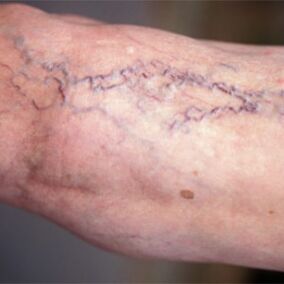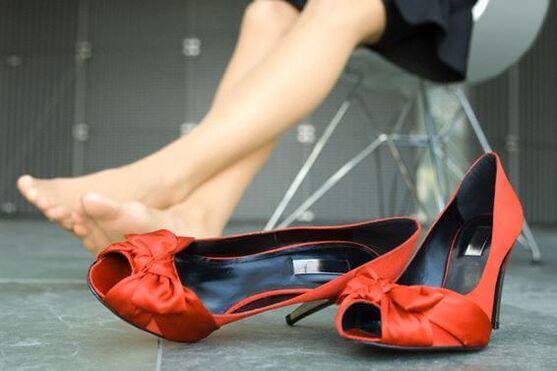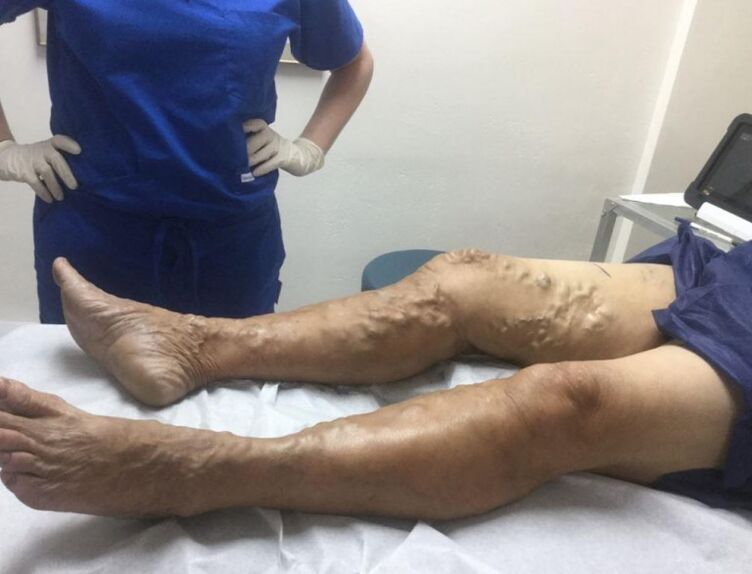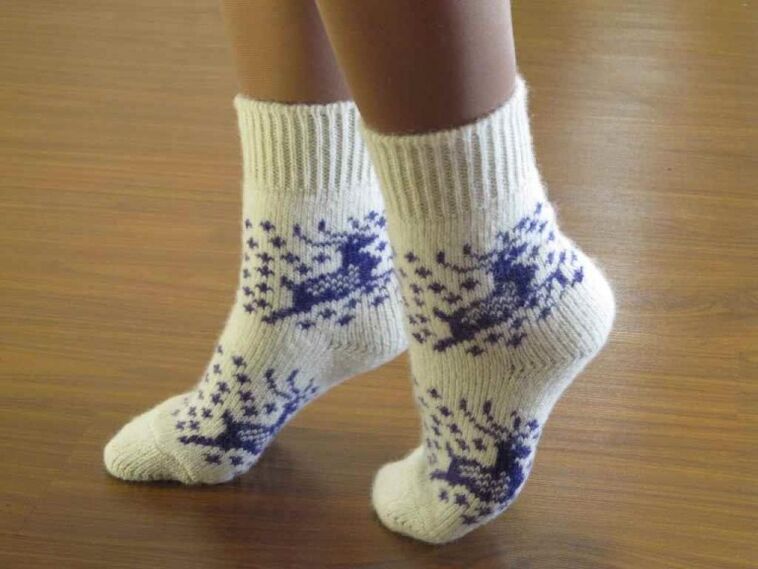Many people experience varicose veins in their lives.Unfortunately, this is a fairly common phenomenon that affects not only the legs as they are commonly thought of, but also other organs.Fortunately, it is treatable.Admittedly, it is long and complex and should only be started after fully understanding why it occurs.
What causes varicose veins and who should worry?
Main symptoms at onset:
- Spider veins or even web-like patterns appear;
- Veins become visible;
- Dry and uncomfortable skin on legs;
- leg muscle cramps;
- Leg swelling and heaviness at the end of the day;
- thicken or darken;
- Veins become sensitive.

What are varicose veins?This problem bothers many middle-aged people and others.This term refers to swelling of veins in the lower extremities.The veins swell, form knots, and become very tortuous, creating a bumpy, blue surface.
This happens because the blood in the veins doesn't flow well enough.Blood stops flowing, causing pressure within the veins to increase.When it exceeds all normal levels, the excess blood begins to exert a stretching effect on the vein walls.The edges of blood vessels move closer to the upper layer of the epidermis and are visible to the naked eye.The first sign of varicose veins is the appearance of a network of blood vessels.There are lesions in the blood vessels in the legs that are visible through the surface of the skin.
Varicose veins - people have known what they are since ancient times.Even Byzantine doctors mentioned the disease in their writings.The Egyptians used elastic bandages to treat it, and Hippocrates, Avicenna, and Paracelsus tried to invent more effective ways to treat it.
Terrifyingly enough, this pathology is very common - approximately 25% of the world's population is susceptible to it.Phlebologists say the main cause of varicose veins is poor development of connective tissue in the legs.Most often, women suffer from this disease, since constant hormonal changes create favorable conditions for the development of the disease.

Prevent varicose veins
Good, strong veins require constant self-care.In the initial stages, varicose veins disfigure the appearance of the legs and pose a minor health threat, but as the condition progresses, complications can become life-threatening.Varicose veins in other organs are often accompaniments of various diseases and need to be treated together with these diseases in order to obtain real results.High-risk groups need to remember to prevent varicose veins first:
- Anyone with a sedentary lifestyle.
- There are a lot of expenses during the day, such as at work.
- Who is overweight or obese.
- Often wear high heels or shoes that are too narrow.
- Have disease in the pelvic area (or have recently had surgery).
- Wearing tight clothing can interfere with blood flow.
- Often sit cross-legged.
- pregnant woman.
- Athletes regularly engage in overload training.
- Take hormone medications.
Many people do not even suspect that they are carriers of serious diseases.Unlike the early stages, the advanced stages of the disease are very difficult to treat.Therefore, everyone, especially those with bad genetics, need to understand what varicose veins are, their symptoms and remember that a timely visit to a phlebologist is as necessary as a visit to the dentist for a preventive check-up.You need to take care of your own health and not let things take their course.
Varicose veins, what exactly are they?
To understand what varicose veins are, let’s look at the underlying causes of this condition.As you know, our body is run through by a dense network of blood vessels, some of which carry blood to the heart (veins) and others, on the contrary, carrying blood in the opposite direction (arteries).As long as the system is working smoothly and the blood vessels are clean, elastic, and not under excessive stress, all is well.If it malfunctions frequently, sooner or later it will lead to diseases, one of which is varicose veins.
It can occur anywhere on the body, but is most common in the extremities.Partly because blood is carried to the legs, the veins are under high load, and partly because our limbs are one of the busiest parts of the body - we're forced to lift heavy weights, walk a lot, stand or sit, which is also bad because it interferes with normal blood flow.
Varicose veins of the extremities: complications
The most common form of this disease, which is basically what is meant when varicose veins are mentioned, are varicose veins in the legs.Its initial symptoms are listed above, but what could lead to neglect of treatment?We list the main complications of this disease:
- Thrombophlebitis;
- Venous thrombosis;
- trophic ulcer;
- Varicose lymph node bleeding.
What is thrombophlebitis?This is inflammation of the outer vein wall and the formation of a blood clot on it, which not only narrows the space for blood flow, but eventually blocks the vessel completely.It is accompanied almost from the beginning by varicose veins in the extremities.A person who does not take care of his veins can suffer from a series of complications, such as acute thrombophlebitis, because blood clots not only interfere with blood circulation, but are also the center of inflammation, affecting not only the vessel wall but also nearby tissues.
venous thrombosis– That’s the name for deep vein thrombophlebitis, an equally serious and difficult-to-treat condition when blood clots form that interfere with blood flow and surrounding blood vessels and tissues become inflamed.What is a blood clot?This is the occurrence of blood clots in blood vessels, which interfere with blood flow and even completely block the lumen of blood vessels.Even if the supply of fresh blood is partially reduced, tissue metabolism slows down, leading to accumulation of its products, and complete obstruction eventually leads to cell death, that is, tissue necrosis.
The particular danger of these diseases is that it can eventually lead to thromboembolism - a dislodged blood clot that can migrate throughout the body and block one of the major arteries, which can be fatal.
Another serious problem in the final stages of varicose veins are trophic ulcers - open, long-term non-healing wounds.for how long?If the wound does not seem to heal within a month and a half, it is a trophic ulcer.She is undergoing treatment, but it is a long and complex treatment that must combine surgery and therapy.
Equally dangerous are complications such as variceal lymph node bleeding.It may be caused by thinning of thickened blood vessels or mechanical stress.Because there is no cost in damaging blood vessels that have become thin and lost their elasticity.Don't think this only applies to the outer veins; those located deeper are equally "fragile" and susceptible to any pressure, impact or displacement.
The consequences of not treating varicose veins are pictured:

The varicose veins in the video give a more depressing impression.To prevent this from happening, you need to consult your doctor as early as possible and strictly follow all his instructions regarding treatment and lifestyle.
Types of varicose veins
As mentioned above, there are other types of varicose veins.There are many of them; these conditions occur for a variety of reasons, and while some are quite common, others are very rare phenomena that are often associated with other illnesses.
- Reticular varicose veins are a network of blue star-shaped veins on the thighs and calves.This condition can occur even in young and thin people, and is often considered just a cosmetic flaw, although it is the first bell - you need to see a phlebologist.
- Stars and a network of blood vessels on the face are a reason to see an endocrinologist, as they often indicate a problem with a person's endocrine system.Although the causes may also be related to lifestyle – alcohol consumption, greasy and unhealthy food, tanning, acne-squeezing habit.
- Varicose veins of the hands - This problem occurs most often in athletes and those in jobs where the hands are required to bear constant heavy loads.
- Varicocele is a varicose vein around the testicles.This is a very common pathology, so men, especially teenagers, need to consult a doctor at the first symptoms, since untreated it often leads to infertility.
- Hemorrhoids are varicose veins in the rectum.It can be caused not only by a sedentary lifestyle but also by weight lifting, pregnancy, constipation, and many other causes.
- Varicose veins in the legs have several stages and, if not treated in the initial stages, can lead to severe vasculopathy and disability.
- Varicose veins of internal organs often occur as a complication of other diseases or after surgery.This could be varicose veins in the pelvic organs, stomach, esophagus, etc.
Here is a short list of the main types of this serious disease.You can learn how to treat each type of varicose veins from the detailed articles posted on our website.We try to regularly discuss traditional and most modern treatments.
chronic venous insufficiency
The root of this problem is bipedalism, which means we are the only species on Earth susceptible to this problem.We won't consider pseudoscientific hypotheses to explain why this happens, although some of them are quite interesting.For example, one hypothesis is that humans came to Earth from Mars, where the gravity is much smaller, so our bodies are not adapted to the load on Earth; another hypothesis is that humans were created by aliens and were underdeveloped somewhere.Still, walking upright requires blood vessels to raise blood to fairly high levels, which means they're put under severe stress.
Normally this system works harmoniously, and blood quickly and evenly supplies oxygen and necessary substances to all parts of the body.But if some kind of malfunction occurs (such as an injury) or the body is constantly exposed to some adverse factors (hard work, excess weight, hormonal deficiencies, etc.), CVI - chronic venous insufficiency can occur.In recent decades, the disease has become significantly younger and now occurs not only in older generations, but also in teenagers, so everyone should know its symptoms:
- Telangiectasia - dilation of small superficial blood vessels;
- Swelling of the legs, worsening at night;
- Calf muscle cramps, goosebumps, and other painful sensations;
- cold feet;
- Pigmentation of skin on legs;
- General malaise and fatigue throughout the day.
As you can see, they are largely consistent with the symptoms of varicose veins listed at the beginning of the article, since this is the beginning of the same disease - varicose veins.Therefore, if you are experiencing at least some of these symptoms, you need to contact a phlebologist immediately, who will prescribe treatment and help you decide on your diet and lifestyle.Varicose veins are not a disease that can be cured with medication, it is actually a lifestyle that must be followed continuously to avoid more serious stages of development.

Modern science offers many treatments that can compensate to a certain extent CVI, eliminate its external manifestations and generally have a positive impact on the condition of the blood vessels.For example, learn about spider veins on the legs, their causes and treatments.Medicine now offers a range of measures to combat this "cosmetic" defect, including:
- Conservative treatment - ointments and tablets that strengthen vessel walls and stimulate blood flow;
- Compression therapy – special medical undergarments;
- Invasive treatments - microthermal coagulation, microsclerotherapy.
Effective methods to help eliminate telangiectasia and its causes include therapeutic exercises and lymphatic drainage massage.
Treating varicose veins with complications is much more difficult, but here too, a comprehensive approach can come into play.what do you mean?This is what modern medicine offers:
- Treatment - medicines, special undergarments, massage, physiotherapy.
- Surgical methods (phlebectomy, venectomy, short stripping, endoscopic vein stripping, etc.).This is the most fundamental method of treating varicose veins, which requires not only surgical preparation and professional implementation, but also qualified postoperative observation.
Medical treatment of varicose veins involves the use of oral medications such as drops, tablets, and capsules as well as medications that are applied to the skin (these are the kinds of ointments you use to rub sore legs).Some drugs can narrow and strengthen blood vessels, some can relieve inflammation, and some can reduce blood clotting, so they should only be used with a doctor's prescription.Topical preparations, namely various creams, ointments, and jellies, often have analgesic, anti-inflammatory, and antipyretic properties.They often supplement ingredients that affect blood clotting.These drugs mainly act on superficial blood vessels but have fewer contraindications.
After detecting chronic venous insufficiency, it is necessary to rule out venous disease as a cause, if possible.That means changing to a job that requires you to stand all day, or lifting weights, losing weight, giving up spicy foods, etc.It's obvious, for example, that you can't eliminate a genetic predisposition, but by understanding it, you can choose a suitable career and monitor the condition of your veins, including annual preventive visits to a vein doctor.Despite all the advances in medicine, our health is still in our own hands.























